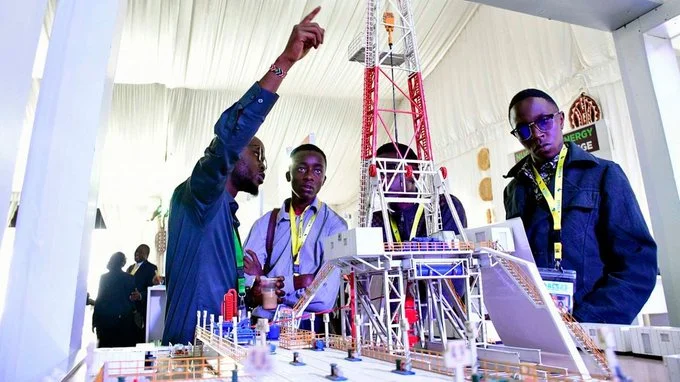Global technology giants under pressure to reduce greenhouse gas emissions are always shopping for alternatives to buying controversial carbon credits to run their data centres.
One area where these digital companies would love to cut their emissions is in their data centres.
A data centre is a large group of networked computer servers typically used by organisations for the remote storage, processing or distribution of large amounts of information.
Google, a US-based Internet giant, in 2020 committed to go beyond buying carbon credits and offsets and operate carbon-free energy in all its data centres and campuses worldwide by 2030.
This, Google CEO Sundar Pichai admitted, is more challenging than the traditional approach in which the Internet giant has been matching energy usage with renewable energy.
“Our data centres power the products and services you’ve come to rely on every day. This will mean every email you send through Gmail, every question you ask Google Search and every YouTube video you watch, and every route you take using Google Maps, is supplied by clean energy every hour of every day,” said Mr Pichai.
To this end, Google has set aside about $5 billion (Sh729.5 billion), with Kenya eyeing just a fraction of this booty.
The major challenge for companies like Google is to find a data centre that runs purely on clean energy.
This explains why Google was among the companies attracted to the Olkaria EcoCloud Data Centre, the first storage facility that relies on renewable geothermal energy and even had a representative during its launch towards the end of last month.
Others included Amazon Web service, Oracle, VMWare and Jamii Telecommunications.
“How much (of the $5 billion) can Kenya attract? That is the question,” wonders EcoCLOUD Data Centre CEO Amos Siwoi.
The potential for Kenya to attract technology companies with environment-friendly data centres is immense.
A lot of these companies do not want to antagonise their regulators’ requirements that they reduce their low carbon footprint.
More than 70 percent of Kenya’s grid power is from green energy, which means that firms that set up business in Kenya already have a head-start in terms of meeting their sustainability objectives.
The greening of Kenya’s grid is courtesy of geothermal power, a renewable energy source that is turning into a magnet for firms on a mission to decarbonise.
Located at the KenGen Smart Industrial Park in Naivasha, the Olkaria EcoCloud Data Centre is expected to house critical applications and data for organisations such as Google.
EcoCloud’s 60-megawatt Hyperscale Data Centre Campus spans three distinct areas, each with unique features.
Campus 1 alone will accommodate 2,640 racks and support its 24 hour-megawatt IT Load capacity, the amount of energy consumed by servers and network equipment in server rooms.
The second campus will have an additional twenty-four Megawatts of IT Load while the final one will have 12 megawatts of IT Load.
Based on a network of computing and storage resources that enable the delivery of shared applications and data, data centres can utilise a lot of power.
Things could be worse if the energy being used to power these facilities is dirty fossil fuels, which have been blamed for increased global warming.
Although emissions from data centres have grown only modestly despite the rapidly growing demand for digital services, thanks to energy efficiency improvements, the use of fossil fuel is still prevalent.
Consequently, data centres and transmission networks have been responsible for one percent of energy-related greenhouse gas emissions, according to the International Energy Association (IEA).
Mr Siwoi reckons that a lot of companies, rather than spending money on carbon credits, have opted for the sites already running on 100 percent renewable energy.
“The question will become: how much can such a data centre supply? The hyper-scale guys will take as much as they can to offset the cost,” added Mr Siwoi.
In the first phase of the Olkaria Data Centre, which Prime Cabinet Secretary Musalia Mudavadi unveiled at the end of last month, the company targets annual revenues of up to $50 million (Sh7.3 billion) on the low end of the scale.
This is because when a hyperscale customer like Google enters a market, it takes up three data centres to form cloud regions.
One such entity will spend between $100 million (Sh14.6 billion) and $150 million (Sh21.9 billion) on one data centre.
This means that one customer alone, taking up three data centres, could earn Olkaria Cloud over $450 million (Sh65.6 billion).
Kenya’s data centres market is expected to grow in leaps and bounds buoyed by network connectivity, government support and targeted growth in the adoption of big data and the Internet of Things (IoT), according to a report released by the research and advisory firm Ken Research.
There are other ways through which the data centre industry is driving decarbonisation.
According to Ciaran Flanagan, VP and Global Head of Siemens’ Datacenter Solutions business, the data centre industry is a major buyer of power purchase agreements (PPAs) for renewable energy, which has a significant impact on the energy mix.
“In 2021, Amazon and Microsoft were the two largest corporate buyers of renewable energy through PPA,” said Mr Ciaran.
In Kenya, East Africa Data Centre, which is part of Africa Data Centres, announced in April 2018 that it had partnered with Power Africa to install solar panels on its premises as it moved towards 100 percent dependency on renewable energy.
Besides ADC, other notable names in the local data centres market include Pan African IX Data Centres Kenya Limited (PAIX), IX Africa and icolo.io.
Thanks to geothermal energy, 70 percent of Kenya’s grid power is from green energy, making the country a magnet for companies that would like to develop data centres without staining their sustainability objectives.
Credit: Source link




